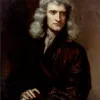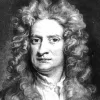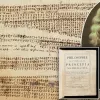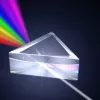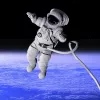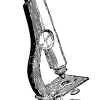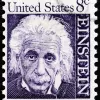Important update from TheSchoolRun
For the past 13 years, TheSchoolRun has been run by a small team of mums working from home, dedicated to providing quality educational resources to primary school parents. Unfortunately, rising supplier costs and falling revenue have made it impossible for us to continue operating, and we’ve had to make the difficult decision to close. The good news: We’ve arranged for another educational provider to take over many of our resources. These will be hosted on a new portal, where the content will be updated and expanded to support your child’s learning.
What this means for subscribers:
- Your subscription is still active, and for now, you can keep using the website as normal — just log in with your usual details to access all our articles and resources*.
- In a few months, all resources will move to the new portal. You’ll continue to have access there until your subscription ends. We’ll send you full details nearer the time.
- As a thank you for your support, we’ll also be sending you 16 primary school eBooks (worth £108.84) to download and keep.
A few changes to be aware of:
- The Learning Journey weekly email has ended, but your child’s plan will still be updated on your dashboard each Monday. Just log in to see the recommended worksheets.
- The 11+ weekly emails have now ended. We sent you all the remaining emails in the series at the end of March — please check your inbox (and spam folder) if you haven’t seen them. You can also follow the full programme here: 11+ Learning Journey.
If you have any questions, please contact us at [email protected]. Thank you for being part of our journey it’s been a privilege to support your family’s learning.
*If you need to reset your password, it will still work as usual. Please check your spam folder if the reset email doesn’t appear in your inbox.
Sir Isaac Newton
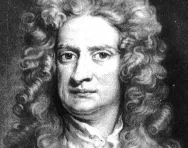
Isaac Newton was born in 1643 and became famous for his work on gravity and his three laws of motion. He was also well known for his work on light and colour, and what is now called calculus (a branch of mathematics).
The famous story of an apple falling to the ground from a tree illustrates how Newton's work on gravity was inspired by things he observed in the world around him.
Top 10 facts
- Isaac Newton is best known for 'discovering' gravity, but he worked on so many different topics that our understanding of the world was changed forever by his work..
- Newton had many roles in his life beyond his scientific research: he was Warden and Master of the Mint, and President of The Royal Society, as well as a member of parliament (MP).
- Newton was born very early (premature) and his family thought he would die, but he actually went on to live to the age of 85.
- Newton was a grumpy man and often argued with people.
- Newton discovered that white light is made up of a range of colours.
- Newton’s mum wanted him to become a farmer. Newton had other ideas!
- Newton initially studied for a law degree at Cambridge University. During this time he bought a book on maths but didn’t understand it.
- Newton owned more books on history than on science.
- When he was an MP, Newton only ever spoke one sentence – and that was to ask for a window to be closed!
- Newton was knighted by Queen Anne on April 16, 1705.
Timeline
- 1643Isaac Newton is born
- 1661Newton goes to study at Cambridge University

- 1666Newton develops his calculus theories

- 1669Newton is made Professor of Mathematics at Cambridge University
- 1687Newton publishes Principia which outlines his 3 laws of motion and his law of gravitation

- 1689Newton becomes an MP
- 1696Newton becomes Warden of the Mint
- 1700Newton becomes Master of the Mint
- 1703Newton becomes President of the Royal Society
- 1705Newton is knighted, becoming Sir Isaac Newton
- 1727Newton dies and is buried in Westminster Abbey
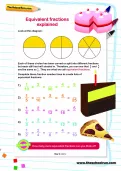

Boost Your Child's Learning Today!
- Get a tailored learning plan for your child
- English & maths activities added each week
- Grow your child's confidence & skills
Did you know?
- Isaac Newton was not very keen on school work and preferred reading and making things.
- Newton was the first person to build a reflecting telescope, which made the images seen through a telescope much clearer.
- Newton was the first scientist to be buried at Westminster Abbey. Since then other scientists have been buried there, including Charles Darwin, Ernest Rutherford, and Sir JJ Thompson.
- Newton studied maths, physics and astronomy at Cambridge University. He became Professor of Mathematics and worked at the university for over 30 years.
- Newton was also interested in alchemy – he spent a lot of time trying to discover how to change things like lead and mercury into gold.
- Forces are measured in ‘Newtons’ after Newton’s work on motion.
- Sometimes Newton’s year of birth is reported as 1642 and sometimes as 1643. This is because according to the old (Julian) form of calendar he was born on the 25th December 1642, but under the Gregorian calendar that we use today he was born on the 4th January 1643!
Look through the gallery below and see if you can spot the following
- Newton in 1689
- Sir Isaac Newton in 1712
- Isaac Newton and some of his handwritten notes
- A prism splitting light into colours
Gallery
About
Born in 1643, Newton is famous for various scientific and mathematical contributions to our understanding of the world, including the three laws of motion, law of gravity, calculus and light.
- The first of his three laws of motion states that an object will keep moving in the same direction unless a force acts on it to make it change direction, speed up or slow down.
- The second law of motion is that the bigger the mass of an object, the bigger the force is needed to make it accelerate and move. He created a mathematical formula for the second law of motion: F=ma (the force (F) needed is equal to the mass of the object multiplied by the rate of acceleration).
- His third law of motion says that ‘for every action there is an equal and opposite reaction’.
Newton described gravity as a pulling force that keeps people on the ground rather than floating off. He also noted that gravity keeps the moon in orbit. Newton told the story of seeing an apple fall to the ground from a tree which inspired him to wonder why it fell down, rather than up or across. This led to his work on defining gravity. Newton developed the universal law of gravitation, which states that two things will be attracted to one another and that the mass of each object will affect the amount of attraction.
Newton was interested in light and colour. He experimented in a dark room with light and prisms and discovered that light could be split into lots of different colours – a rainbow. He also discovered that something appears to be a certain colour because of the amount of light that it absorbs and/or reflects.
Newton also developed a strand of mathematics called calculus. This type of mathematics helps find lengths, volumes and areas through calculation. Calculus also helps mathematicians to calculate rates of change.
Sir Isaac Newton: famous quotes
- "If I have seen further it is by standing on the shoulders of giants."
- "Every body continues in its state of rest, or of uniform motion in a right line, unless it is compelled to change that state by forces impressed upon it." (Translated from Latin)
- "I don't know what I may seem to the world, but as to myself, I seem to have been only like a boy playing on the sea-shore and diverting myself in now and then finding a smoother pebble or a prettier shell than ordinary, whilst the great ocean of truth lay all undiscovered before me."
Words to know
Acceleration – the rate an object changes its speed at. It is calculated using the following formula: acceleration = change in speed ÷ time taken.
Astronomy – the study of stars, moons, planets and other ‘celestial’ objects.
Calculus – a strand of mathematics that calculates rates of change and helps find lengths, volumes and areas.
Force – a push or pull on an object.
Gravity – a force that makes things to move towards each other.
Mathematics – the study of numbers, shapes and quantities.
Motion – when something moves.
Physics – the study of matter and energy and how they interact.
Telescope – a piece of equipment that magnifies what you see through it, making things appear bigger and closer. Telescopes are often used to look at stars, moons and planets.
Related Videos
Just for fun...
- Use a prism to make your own rainbow by splitting light into its different colours
- Make your own rainbow using water and mirrors
- Have a go at this gravity water drop experiment
- Try to find the centre of gravity with this experiment
- Pick a forces or motion experiment from this array
Find out more
- Understand more about the impact of Newton's work with hands-on experiments for children from the Royal Society
- Find out how Isaac Newton changed the way we understand the Universe and watch video clips explaining some of his discoveries
- Try a Isaac Newton classroom activity from Terrific Scientific
Isaac Newton books for children
See for yourself
- Watch a video about Isaac Newton’s work, with Dick, Dom and Fran from ‘Absolute Genius’
- Visit Sir Isaac Newton’s birthplace
- Visit The Science Museum in London to see a replica of the first reflecting telescope made by Newton 1668
- Watch "Newton" in a Horrible Histories song, The Earth Goes Round the Sun Song
